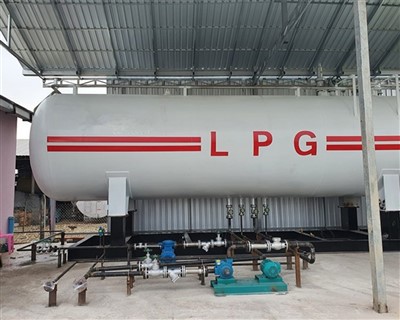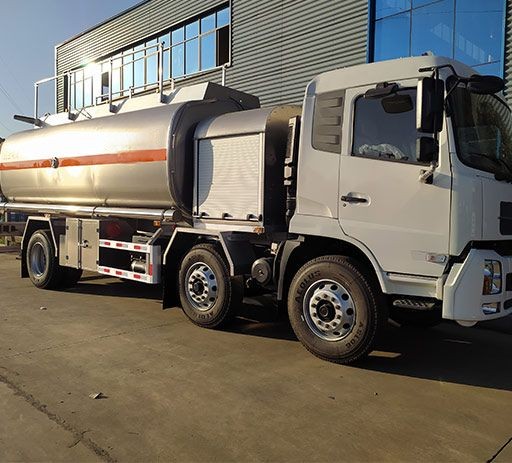Ultimate Guide to Mini Truck Dump Beds: Features, Benefits, and Buying Tips
Mini truck dump beds have become increasingly popular for their versatility and efficiency in handling various transport tasks. Whether used for weighty materials on a construction site or for landscaping purposes, mini trucks equipped with dump beds provide a valuable solution for both personal and professional uses. This article delves into the functionalities, advantages, and considerations when choosing a mini truck dump bed, ensuring you are equipped with all the necessary information before making a purchase.
Understanding Mini Truck Dump Beds
A mini truck dump bed is a specialized vehicle designed for hauling and dumping materials. Mini trucks, generally smaller than the traditional trucks, are easier to maneuver in tight spaces and are ideal for urban environments or small worksites.
What is a Mini Truck?
A mini truck is a compact, lightweight vehicle primarily used for transporting goods. They often feature a small footprint, making them ideal for tasks where larger trucks cannot operate effectively. Mini trucks can have either a single cab or a double cab configuration, accommodating different passenger and cargo requirements.
What is a Dump Bed?
A dump bed is a type of truck bed that can be raised or tilted to allow materials to be unloaded easily. This feature is especially crucial in construction, landscaping, and agriculture, where efficient material handling is key to productivity.
How Mini Truck Dump Beds Work
Mini truck dump beds use hydraulic systems to lift the bed, allowing gravity to assist in unloading materials. This mechanism reduces the manual effort required in dumping loads and enhances operational efficiency.
Advantages of Mini Truck Dump Beds
- Space Efficiency: Their compact size makes mini trucks suitable for small spaces.
- Cost-Effective: Generally, mini trucks are more affordable to buy and maintain compared to larger trucks.
- Fuel Efficiency: Due to their smaller engine sizes, they tend to consume less fuel.
- Versatility: They can be used in various applications, from hauling gravel to landscaping work.
Types of Mini Truck Dump Beds
Mini truck dump beds come in various designs to suit specific needs and types of loads. Here are some common types:
1. Standard Dump Bed

The standard dump bed is designed to carry loose materials like soil, sand, or gravel. It is a simple bed that may have sidewalls to prevent spills during transport.
2. Flatbed Dump Bed
Flatbed dump beds offer an open platform for hauling larger items that may not fit into standard dump beds. They can be beneficial for transporting pallets or machinery.

3. Tipper Dump Bed
Tipper dump beds are designed to allow for quick unloading from the rear or sides. This feature can enhance operational efficiency significantly, especially in jobs requiring frequent unloading.
Key Features to Look for in a Mini Truck Dump Bed
When selecting a mini truck dump bed, understanding the essential features can aid in making the right decision. Here are key considerations:
1. Load Capacity
The load capacity is crucial for determining how much weight the dump bed can handle. Options typically range from 1,000 lbs to 5,000 lbs. Assess your intended use to pick the right capacity.
2. Construction Material
Mini truck dump beds can be made from various materials, including steel, aluminum, and composite materials. Steel is durable for heavy loads, while aluminum provides a lighter option for improved fuel efficiency.
3. Hydraulic System
Look for mini trucks with reliable hydraulic systems that can handle lifting heavy loads effortlessly. Systems with a quick-release valve offer enhanced convenience during operation.
4. Bed Size and Dimensions
Consider the bed size when choosing a dump bed. It should meet the needs of your typical loads while fitting on your mini truck. Common bed sizes range from 6 to 8 feet in length.
Practical Examples of Using Mini Truck Dump Beds
1. Construction Sites
At construction sites, mini truck dump beds prove handy for hauling sand, gravel, and dirt. Their compact size allows them to navigate narrow areas while providing efficient unloading.
2. Landscaping Projects
Mini dump trucks are beneficial in landscaping for transporting mulch, soil, and rocks. Their ability to dump loads quickly helps maintain a fast workflow.
3. Agricultural Applications

Agricultural workers use mini truck dump beds for transporting crops or feed. Their smaller size makes them suited for farms with limited access roads.
Buying Guide for Mini Truck Dump Beds
Here are essential factors to consider when purchasing a mini truck dump bed:
1. Assess Your Needs
Identify what types of materials you will be hauling and how often you’ll need to dump loads. This will guide your choice in terms of size and capacity.
2. Research Brands and Models
Look into reputable brands known for quality and durability. Consider popular models and compare their specifications and reviews.
3. Evaluate Price Options
Prices can vary based on features and brand reputation. Set a budget and look for options within that range while ensuring they meet your requirements.
4. Test the Mechanism
When possible, test the hydraulic mechanism for lifting efficiency and reliability. A smooth operating system ensures ease of use in practical situations.
5. Warranty and Service Options
Check if the mini truck dump bed comes with a warranty. Service availability is crucial for maintaining the equipment in the long run.
Maintaining Your Mini Truck Dump Bed
Regular maintenance ensures your mini truck dump bed remains functional and safe for use. Here are some maintenance tips:
1. Regular Inspections
Inspect the hydraulic system, bed hinges, and structure of the dump bed for wear and tear. Address any signs of damage promptly.
2. Cleaning
Keep the bed clean from debris and residues that can build up and affect performance. Regularly wash the bed and check for corrosion.
3. Lubrication
Apply grease to moving parts, including the hydraulic arms, to enhance functionality and reduce friction during operation.
Basic Maintenance Table
| Maintenance Task | Frequency |
|---|---|
| Inspect hydraulic system | Monthly |
| Clean dump bed | After each use |
| Lubricate moving parts | Every 3 months |
Frequently Asked Questions
1. What is the average cost of a mini truck dump bed?
The average cost for a mini truck dump bed varies widely based on size and features, typically ranging from $5,000 to $15,000.
2. Can I modify my existing mini truck to add a dump bed?
Yes, you can modify existing mini trucks. Consult with a professional to ensure the modifications align with safety standards.
3. How do I decide on the right load capacity?
Consider the heaviest materials you will transport regularly and choose a capacity that exceeds that weight.
4. Are mini truck dump beds suitable for off-road use?
Yes, many mini truck dump beds are designed for off-road use, but always verify the specifications specified by the manufacturer.
5. What is the typical lifespan of a mini truck dump bed?
With proper maintenance, a mini truck dump bed can last anywhere from 10 to 20 years or more, depending on the usage and care.
6. Can I rent a mini truck dump bed instead of buying one?
Yes, many equipment rental companies offer mini truck dump beds for short-term use, which can be cost-effective for infrequent tasks.
